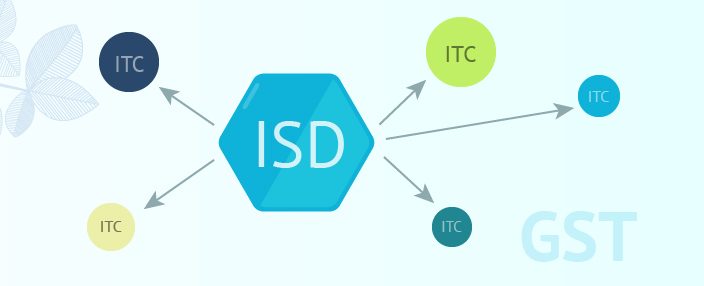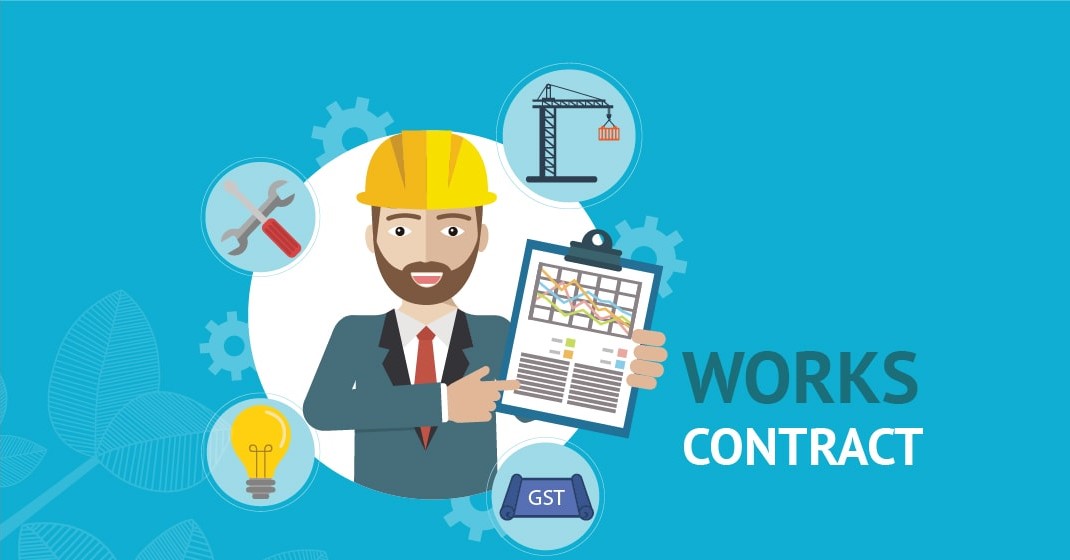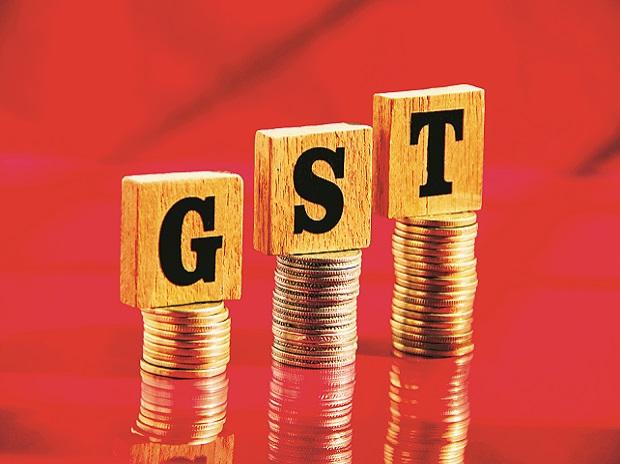Companies may have their head / corporate office at one place and units / branches at other places which may be registered separately. The Head Office would be procuring certain services which would be for common utilization of all units across the country. The bills for such expenses would be raised on the Head Office. But the Head Office itself may not be providing any output supply so as to utilize the credit which gets accumulated on account of such input services. Thus an issue arises as to how such accumulated credit can be utilized.
In this regard in order to ensure seamless flow of credits , GST law prescribes the concept of Input Service Distributor (ISD).
The provisions governing Input Service Distributor are mandated under Section 20 and 21 of the CGST Act,2017 and Rule 39 and 54(1) of the CGST Rules,2017.
1. Who is an Input service distributor (ISD) under GST?
Input Service Distributor (ISD) means an office of the supplier of goods or services or both which receives tax invoices towards receipt of input services and issues a prescribed document for the purposes of distributing the credit of CGST, SGST/ UTGST or IGST paid on the said services to its branches (having different GSTIN) which are supplier of taxable goods or services or both having same PAN as that of the ISD.
It is important to note that the ISD mechanism is meant only for distributing the credit on common invoices pertaining to input services only and not goods (inputs (raw materials) or capital goods).
Let’s take an example to understand this concept.
The Corporate office of ABC Ltd., is at Bangalore, with its business locations of selling and servicing of goods at Bangalore, Chennai, Mumbai and Kolkata. Software license and maintenance is used at all the locations, but invoice for these services (indicating CGST and SGST) are received at Corporate Office. Since the software is used at all the four locations, the input tax credit of entire services cannot be claimed at Bangalore. The same has to be distributed to all the four locations. Here, the Corporate office at Bangalore is the Input Service Distributor.
2. Conditions to be fulfilled by ISD for distribution of credit
- Registration: Input Service Distributor has to compulsorily register as “ISD” by filing FORM GST REG-01. There is no threshold limit for registration for an ISD. In case the such head office has already taken GST registration as supplier then also separate registration need to be obtained as an ISD. Only a registered ISD shall be able to distribute the credit to the recipients.
- Invoicing: For the purposes of distributing the input tax credit, an ISD has to issue an ISD invoice, as prescribed in rule 54(1) of the CGST Rules, 2017, clearly indicating in such invoice that it is issued only for distribution of input tax credit.
- Returns: Amount of tax credit distributed should not exceed the amount of tax credit available with the ISD as at the end of a relevant month to be filed in GSTR-6 by 13th of the succeeding month by ISD.
The recipient of the tax credit can view the tax credit so distributed by ISD in GSTR-2A / GSTR-2B that is auto-populated and in turn, can claim the same by filing GSTR-3B.
It may be noted here that an ISD need not file annual GST returns as ISD.
3. Distribution of Input Tax credit by ISD
It is important to note that the credit of tax paid under reverse charge mechanism is not available for distribution by the ISD to the recipients. So, the ISD has to utilize such credit only as a normal taxpayer, if it is separately registered as normal taxpayer viz supplier.
The credit of CGST, IGST and SGST / UTGST paid by ISD (other than under reverse charge) shall be distributed, in the prescribed manner as given below:
- The input tax credit on account of CGST and SGST or UTGST in respect of recipient (branch / unit) located in the same state shall be distributed as CGST and SGST or UTGST respectively.
- The input tax credit on account of CGST and SGST or UTGST shall, in respect of a recipient located in a State or Union territory other than that of the ISD, be distributed as integrated tax.
- The input tax credit on account of integrated tax shall be distributed as integrated tax.
It may be noted here that the amount to be so distributed as above shall be equal to the aggregate of the amount of input tax credit of CGST , SGST/ UTGST or IGST that qualifies for distribution to such recipient.
The ISD shall distribute separately the amount of eligible and ineligible (Section 17(5)) credit.
In what ratio will the credit be distributed by the ISD?
1) The tax credit available against any specific input services used entirely by one of the recipients can be allocated only to that recipient for utilization of such credit and not to other recipients.
2)The tax credit available against the input services used commonly by more than one recipients of the ISD shall be allocated to those recipients on a proportionate basis in the ratio of the turnover of all such recipients that are operational during the year
3)The tax credit available against the input services used commonly by all the recipients of the ISD shall be allocated to all the recipients on a proportionate basis in the ratio of the turnover of all the recipients that are operational during the year.
For example, if an ISD has 4 units across the country. However, if a particular input service pertains exclusively to only one unit and the bill is raised in the name of ISD, the ISD can distribute the credit only to that unit and not to other units. If the input services are common for all units, then it will be distributed according to the ratio of turnover of all the units.
Illustration:
M/s XYZ Ltd, having its head Office at Mumbai, is registered as ISD. It has three units in different states namely ‘Mumbai’, ‘Bhopal’ and ‘Delhi’ which are operational in the current year. M/s XYZ Ltd furnishes the following information for the month of July, 2017 & asks for permission to distribute the below input tax credit to various units.
(i) CGST paid on services used only for Mumbai Unit: Rs.500000/-
(ii) IGST, CGST & SGST paid on services used for all units: Rs.1200000/-
Total Turnover of the units for the Financial Year 2015-16 are as follows: –
| Unit | Amount in (Rs) |
| Total Turnover of three units | 10,00,00,000 |
| Turnover of Mumbai unit | 5,00,00,000 (50%) |
| Turnover of Bhopal unit | 3,00,00,000 (30%) |
| Turnover of Delhi unit | 2,00,00,000 (20%) |
Computation of Input Tax Credit Distributed to various units is as follows:
| Particulars | Total credit available | Mumbai | Bhopal | Delhi |
| CGST paid on services used only for Mumbai Unit. | 5,00,000 | 5,00,000 | ||
| IGST, CGST & SGST paid on services used in all units Distribution on pro rata basis to all the units which are operational in the current year | 12,00,000 | 6,00,000 | 3,60,000 | 2,40,000 |
| Total | 15,00,000 | 9,00,000 | 3,60,000 | 2,40,000 |
Note 1: Credit distributed pro rata basis on the basis of the turnover of all the units is as under: –
(a) Unit Mumbai: (50000000/100000000) *1200000 = Rs.6,00,000
(b) Unit Bhopal: (30000000/100000000) *1200000 = Rs.3,60,000
(c) Unit Delhi: (20000000/100000000) *1200000 = Rs.2,40,000
4. Recovery procedure for wrongful distribution of credit by ISD
As per Section 21 of the CGST Act where the ISD distributes the credit in contravention of the provisions contained in section 20 of the CGST Act resulting in excess distribution of credit to one or more recipients of credit , the excess credit so distributed shall be recovered from such recipients along with interest and penalty, if any.
The recipient unit(s) who have received excess credit from ISD may deposit the said excess amount voluntarily along with interest , if any by using FORM GST DRC-03.
If it does not deposits voluntarily , proceedings will be initiated for recovery under Section 73 / 74 of the CGST Act. Further ISD will also be liable to a general penalty under Section 122(1)(ix) of the CGST Act,2017.
5. Frequently asked questions (FAQs) on Input Service Distributor
Ques 1: Will Input Service Distributors be required to be separately registered other than the existing taxpayer registration?
Ans. Yes, the ISD registration is for one office of the taxpayer which will be different from the normal registration.
Ques 2: How can I register as an ISD?
Ans. While applying for the New Registration Application of a normal taxpayer. All you need to do is select Input Service Distributor only under Reason to obtain registration in the Business Details section of PART B of the New Registration Application viz GST REG-01.
Ques 3: Can a taxpayer have multiple ISDs?
Ans. Yes. Different offices of a taxpayer can apply for ISD registration.
Ques 4: Can a company have multiple ISDs?
Ans. Yes, different offices like marketing division, security division etc. may apply for separate ISD.
Ques 5: Can I obtain ISD registration if my place of business is not fixed?
Ans. It is mandatory to provide Principal place of business in GST REG-01, thus you need to mention the address of the place from where you are conducting your business. However, you can file an amendment in case you need to change your place of business and the change is allowed within the state.
Ques 6: Can an ISD opt for Composition scheme?
Ans. ISD registration is solely for distribution of credits and not for providing outward supplies wherein separate registration need to be obtained. Accordingly question of opting composition scheme as an ISD does not arise.
Que 7: Can credit be distributed to only revenue generating units?
Ans. The revenue generating units have GST liability, so rightly the ITC on those services used by them must be allocated to them to use the tax credit to set off against their tax liability.
Que 8: What are the consequences of credit distributed in contravention of the provisions of the Act?
Ans. The credit distributed in contravention of provisions of Act could be recovered from the recipient to which it is distributed along with interest.
Que 9: Do Input Service Distributors need to file a separate statement of outward and inward supplies with their return?
Ans. No, the ISDs need to file only a return in Form GSTR- 6 and the return has the details of credit received by them from the service provider and the credit distributed by them to the recipient units. Since their return itself covers these aspects, there is no requirement to file a separate statement of inward and outward supplies.
Ques 10: By when do an ISD is required to file Form GSTR-6?
Ans. ISD Returns for every month can only be filed on or before the 13th of next month or the extended date if any.
Ques 11: Can a ISD file its GST return in case the counterparties have not filed Form GSTR1/5?
Ans. Yes, ISD can file its GST return in Form GSTR-6 return even if its counterparties have not filed their respective Form GSTR-1 or Form GSTR-5.
Ques 12: Is there any late fee in case of delayed filing of Form GSTR-6?
Ans. In case the GSTR 6 is filed after the due date, the taxpayer is charged with a late fee as a penalty. The late fee is now Rs. 50 per day of default. However, there is no fees for delay in filing of Nil return.
6. Conclusion:
The concept of Input Service Distributor (ISD) under GST is a legacy carried over from the Service Tax Regime. It is a facility made available to business having a large share of common expenditure and billing/payment is done from a centralized location. The mechanism is meant to simplify the credit taking process for entities and the facility is meant to strengthen the seamless flow of credit under GST.
***
[rainbow]Don’t miss the next GST Update / Article / Judicial pronouncement[/rainbow]
Subscribe to our newsletter for FREE to stay updated on GST Law
Resolve your GST queries from national level experts on GST free of cost.
Frah Saeed is a law graduate specializing in the core field of indirect taxes and is the Co-founder of taxwallah.com. She has authored many publications on GST and is into full-time consultancy on GST to big corporates. She as a part of taxwallah.com heads a team comprising of Chartered Accountants and Advocates and plays a key role in our mission to disseminate GST knowledge to all.




